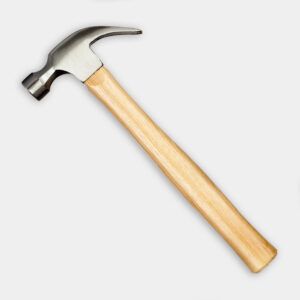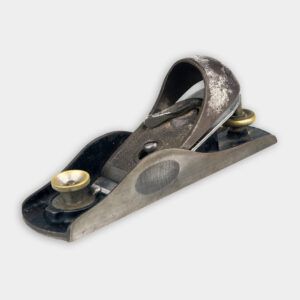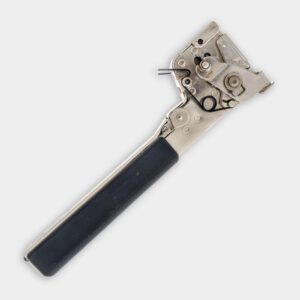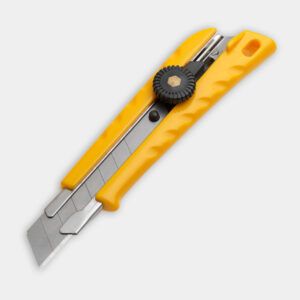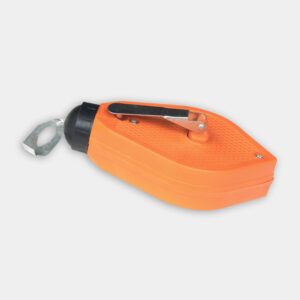We may be compensated if you purchase through links on our website. Our team is committed to delivering honest, objective, and independent reviews on home products and services.
Just like any type of exterior material, shingle siding can suffer damage over time. Fortunately, in many cases, you can repair shingle siding yourself. This video and guide will walk you through the entire repair process, from assessing the damage to installing new shingles, alongside This Old House general contractor Tom Silva.
Assess the Shingle Damage
Before beginning any repairs, assess the damage to your shingle siding. Look for signs of wear and tear, such as cracked or split shingles, curling or warped edges, discoloration or rot, and missing shingles. Once you have identified the damaged shingles, mark the area that needs repair. This assessment will help you estimate the number of replacement shingles needed and plan your work accordingly.
Look for Cracked or Split Shingles
Cracked or split shingles are common in aging siding or areas exposed to extreme weather conditions. These cracks can let moisture seep behind the shingles, potentially leading to water damage, rot, and mold inside your walls. To check for cracks:
- Inspect each shingle: Look closely at the individual shingles, especially in areas that are exposed to direct sunlight or frequent rain. Pay attention to hairline cracks or more obvious splits.
- Test flexibility: Gently press on the shingle’s surface to see if it feels brittle or fragile. Older shingles may crack easily when pressure is applied, indicating they are near the end of their lifespan.
Check for Curling or Warped Edges
Shingles that curl or warp away from the wall are a sign of water damage, excessive heat, or aging materials. Curling shingles can allow wind-driven rain to penetrate behind them, increasing the risk of leaks.
Look for shingles that are lifting or curling at the edges. These can be particularly vulnerable to being blown off by strong winds, exposing the underlayment or structure beneath.
Inspect for Discoloration, Rot, or Mold
Discoloration, dark spots, or green and black streaks on your shingles are often signs of water infiltration, mold, or rot. Mold and mildew growth can spread beneath the siding, potentially affecting the integrity of the wall structure.
- Look for stains: Check for water stains, black streaks, or other discolorations on the shingles. These areas could indicate that water has been pooling or soaking into the shingles for an extended period.
- Test for rot: If you suspect rot, gently press on the discolored areas. If the shingles feel soft, spongy, or crumble under pressure, they may be rotting and will need to be replaced.
Identify Missing or Loose Shingles
Missing or loose shingles are a serious issue as they expose your home’s underlying layers to the elements. Wind, rain, and debris can penetrate these areas, leading to interior damage, water leaks, and reduced insulation efficiency.
Walk around your home and inspect the siding for any missing shingles. Loose shingles may appear to be in place but shift easily when touched or moved by wind. Pay extra attention to corners, eaves, and the areas around windows and doors, where shingles may be more vulnerable to loosening due to structural movements or weather impacts.
Repairing Shingle Siding: Tools and Materials
Once you’ve scoped out the problem, you’re ready to start your repair. First, gather the tools and materials you’ll need.
You’ll also likely need these materials, depending on the scope of the repair work.
- 2-inch stainless steel ring shank nails
- 3-inch galvanized nails
- 4-penny galvanized nails
- Housewrap or building paper
- Replacement shingles
- Rosin paper
Prepare the Work Area for Shingle Repair
Setting up your workspace beforehand helps prevent interruptions and enhances safety. Set up a safe work zone around the repair area. Remove any obstacles that might hinder your work, and make sure you have a stable ladder or scaffolding for accessing higher areas.
Remove Damaged Shingles
In the video, Silva demonstrates how to use a pitchfork to remove damaged shingles without harming the surrounding ones. This careful approach minimizes further damage and prepares the surface for repair. We’ve outlined the process below.
- Start at a comfortable height, slightly above the damaged area.
- Gently insert the pitchfork under the damaged shingles.
- Lift and pull to remove the shingles, being careful not to damage the underlying structure.
- Remove any remaining nails or debris from the exposed area.
Inspect and Repair the Shingle Sheathing
Once the damaged shingles are removed, inspect the exposed sheathing for any issues.
- Check for loose boards by looking for vibrations when tapping on the sheathing.
- Secure any loose sheathing to the wall studs using 3-inch galvanized nails.
- Replace any rotted or damaged sheathing boards.
- Verify that all sheathing is properly fastened and leveled.
Install the Underlayment of the Shingles
A well-installed underlayment prevents future water damage and supports the new shingles. Silva recommends using rosin paper as an underlayment to allow for the natural expansion and contraction of both the sheathing and the shingles.
- Cut the rosin paper to size, allowing for overlap at the edges.
- Starting at the bottom of the repair area, staple the rosin paper to the sheathing.
- Overlap each subsequent row by at least 2 inches.
- Secure the top edge with staples, leaving it loose to allow for proper water drainage.
Install the New Shingles
With the preparation complete, you’re ready to install the new shingles. Follow these steps for a proper installation:
- Start at the bottom of the repair area, aligning the first shingle with the existing starter course.
- Use the story pole to mark the location of each subsequent course.
- Nail each shingle approximately 3/4 to 1 inch from the edge, using 4-penny galvanized nails.
- Space shingles about 1/8 inch apart to allow for expansion.
- Use a block plane to trim corner shingles flush with the house wall, being mindful of the direction of the wood grain.
Create a Woven Corner
For a professional finish and better water resistance, create a woven or braided corner where shingles meet at the house corner:
- Install the first corner shingle on one side of the house.
- Overlap the adjacent corner shingle from the other side.
- Alternate this pattern as you work up the corner, creating a staggered, interlocking effect.
Tip: White cedar shingles may curl as they dry out, but you can prevent this by using 2-inch stainless steel ring shank nails. Drive the nails into the butt of the shingles and the substrate to pull the shingles tight against the wall.
Blend New Shingles
To help new shingles blend seamlessly with existing siding, consider staining or treating them to match the color of the weathered shingles. Allowing the new shingles to weather naturally over time will also contribute to a more uniform appearance.
Maintaining Shingle Siding
Regular maintenance can extend the life of your shingle siding and prevent future repairs. Here are some tips:
- Clean the siding periodically to remove dirt and debris.
- Inspect your siding annually for signs of damage or wear.
- Treat the shingles with a water-repellent preservative every few years.
- Trim back any vegetation that may be in contact with the siding.
